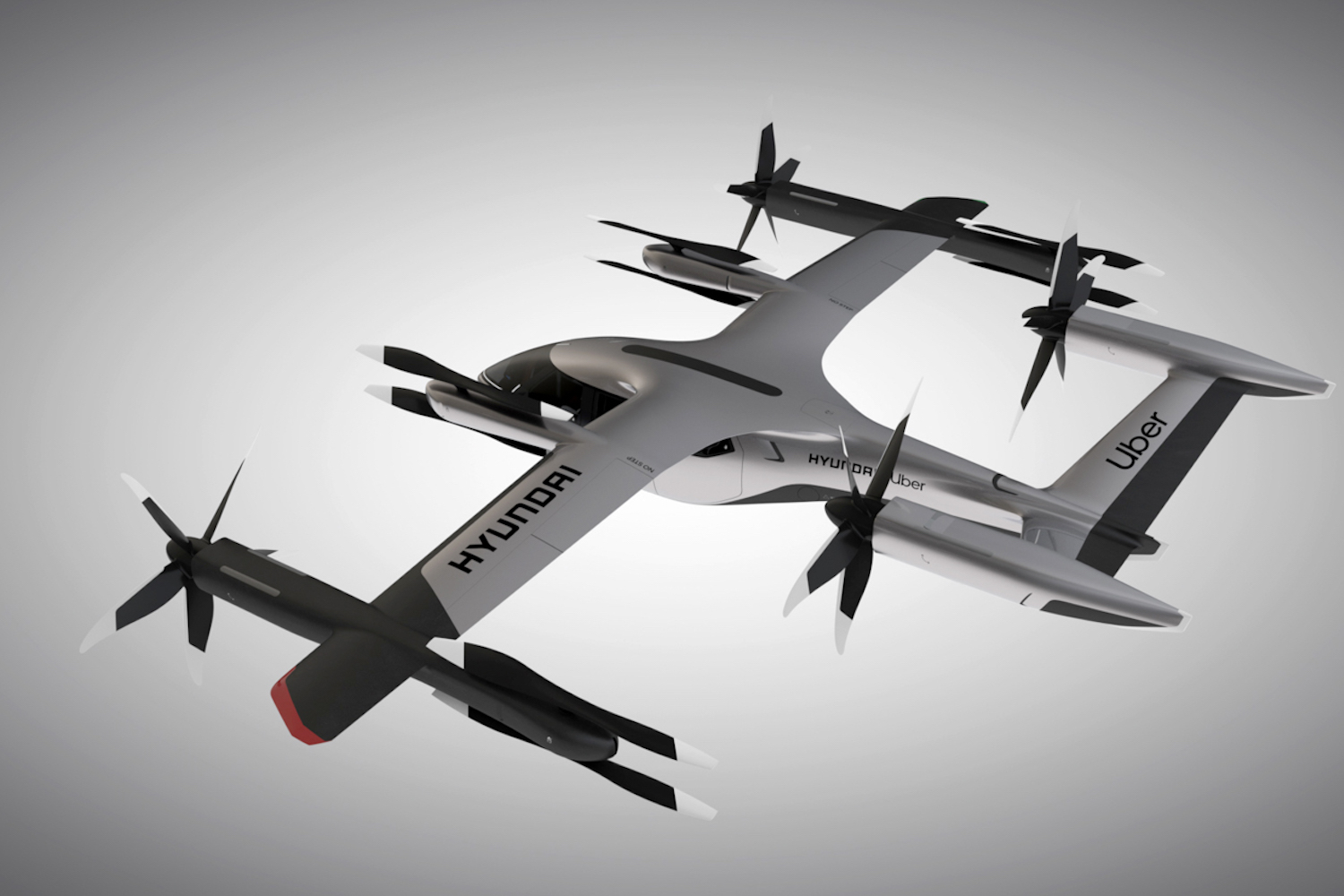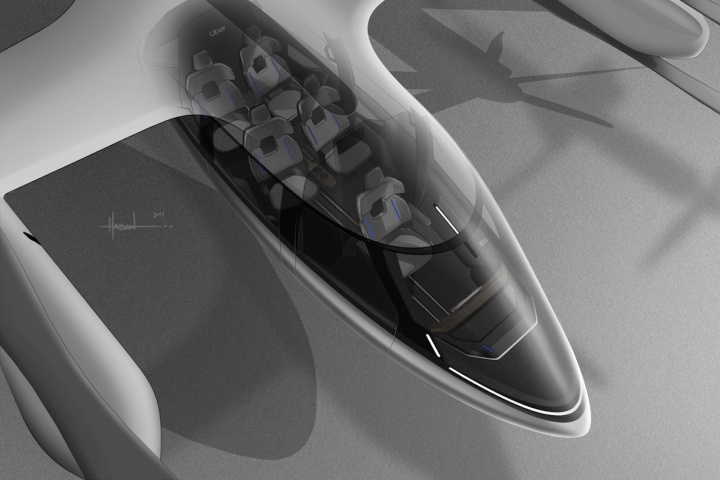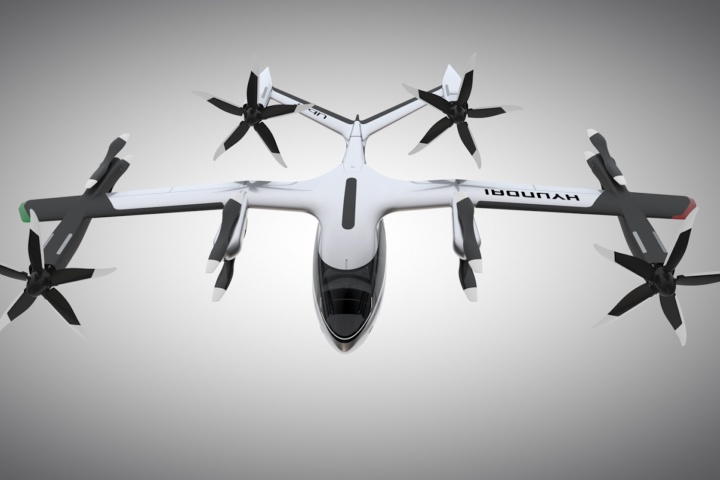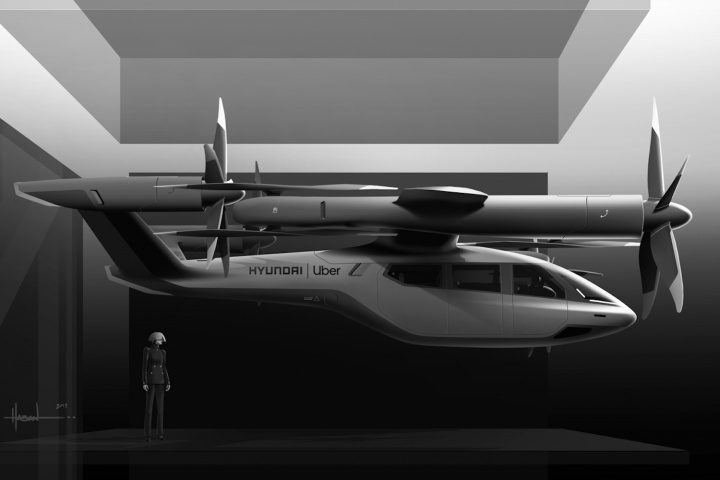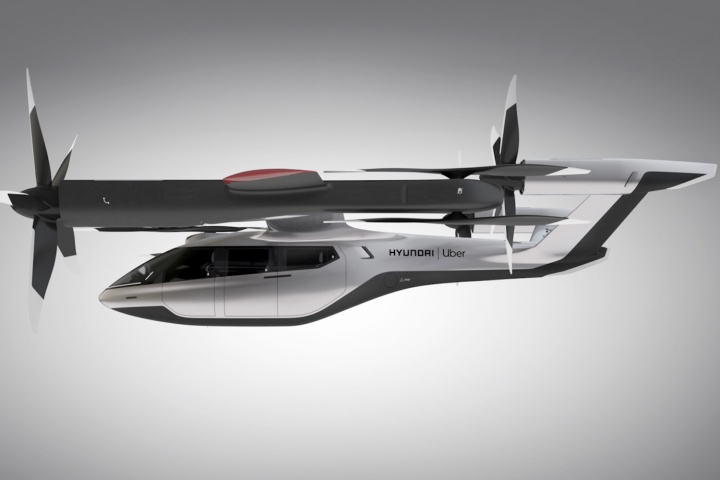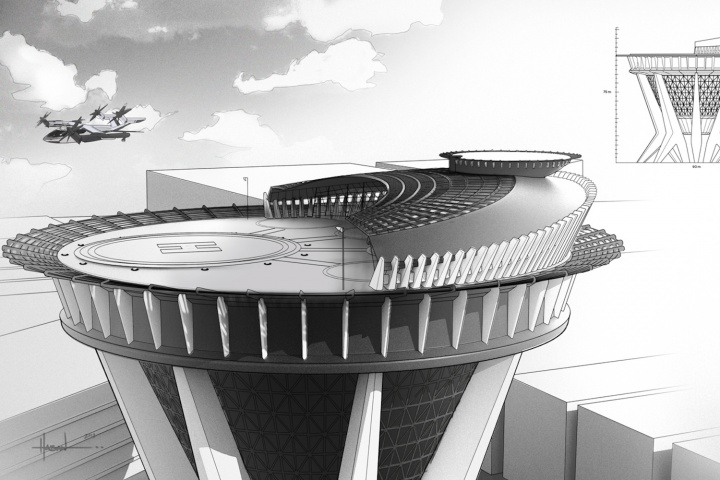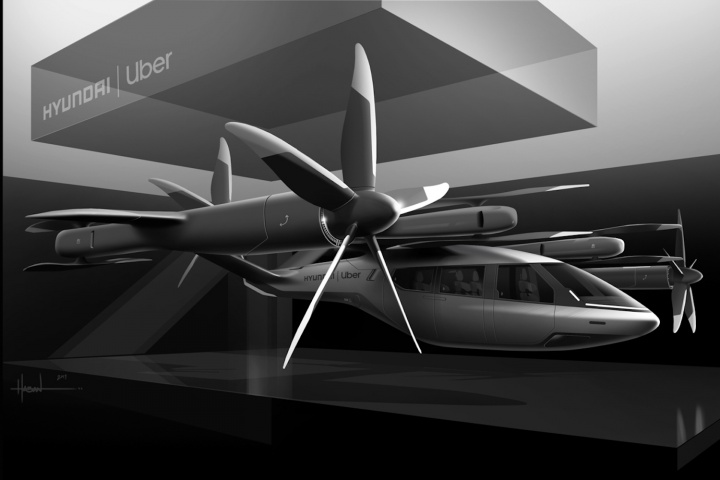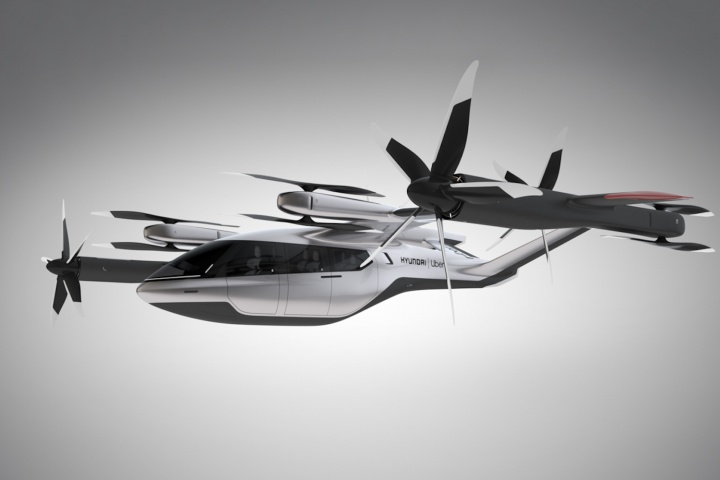Hyundai and Uber have shown a joint air taxi concept at the Consumer Electronics Show (CES) in Las Vegas.
Inspired by NASA
The so-called Personal Air Vehicle (PAV) is being shown as a life-sized model at the show, held in the air by wires so that visitors can see what it would look like when airborne. Significantly, both Hyundai and Uber are going to publicly release technical details of the PAV so as to potentially kick-start developments in the area by rivals, an open-source approach that is said to be inspired by NASA.
As part of the partnership, Hyundai will design and build the flying taxi (it's not really a flying car, in spite of the temptation to call it that, but actually more of an electric, multi-rotor, helicopter) and Uber will provide the service side of the operation. Both companies will work together to provide infrastructure for the project including charging facilities and urban helipads.
"Our vision of Urban Air Mobility will transform the concept of urban transportation," said Jaiwon Shin, Executive Vice President and Head of Hyundai's Urban Air Mobility (UAM) Division. "We expect UAM to vitalise urban communities and provide more quality time to people. We are confident that Uber Elevate is the right partner to make this innovative product readily available to as many customers as possible."
"Hyundai is our first vehicle partner with experience of manufacturing passenger cars on a global scale. We believe Hyundai has the potential to build Uber Air vehicles at rates unseen in the current aerospace industry, producing high quality, reliable aircraft at high volumes to drive down passenger costs per trip. Combining Hyundai's manufacturing muscle with Uber's technology platform represents a giant leap forward for launching a vibrant air taxi network in the coming years," said Eric Allison, head of Uber Elevate.
Cruises at 290km/h
The SA-1 vehicle has a notional cruising speed of 290km/h, and a cruising altitude of around 300 to 600 metres. Its normal one-trip range will be around 100km. Hyundai says that it can be recharged in around five to seven minutes.
As with many e-VTOL (electric vertical take off/landing) craft, the SA-1 uses several rotors, rather than the more traditional single rotor. This is both for safety (failure of one rotor or electric drive unit means the aircraft can still stay aloft on the rest) and for noise (lots of small rotors make less noise than one big one).
It's something of a half-way house between a helicopter and a conventional winged aircraft. It'll take off and land vertically, but will switch to more conventional lift-assisted flight when moving forwards, with the aerodynamic effect of its long, thin wings reducing the energy demand on the motors and batteries. While the initial models will be piloted, but the idea is that eventually they'll be autonomous.
Autonomous ground vehicles for backup
As well as this new airborne armada, Hyundai is working on a series of ground-bound vehicles to work with the air taxi concept. These will consist of a series of autonomous PBVs, or Purpose Built Vehicles which will meet up with the air taxis at a Hyundai-designed hub. These PBVs will be "ground-based eco-friendly mobility solutions that provides customized spaces and services for passengers in transit." Hyundai has suggested that they might be mobile coffee shops, offices, or even medical clinics, depending on the needs of the airborne passengers.
"For our smart mobility solutions, we considered what truly matters in cities and in people's lives. UAM, PBV, and Hub will revitalise cities by removing urban boundaries, giving people time to pursue their goals, and creating a diverse community. Our goal is to help build dynamic human-centred future cities and continue our legacy of progress for humanity. CES 2020 is just the start and we will continue to realise this vision," said Euisun Chung, Executive Vice Chairman of Hyundai Motor Group.
The air-to-ground concept is part of a wider brief that Hyundai has given itself, that of regenerating and revitalising the world's cities. The company established the Human-Centred City Advisory Group with top global experts from fields such as psychology, architecture, urban design, transportation, and political science, and conducted research on how future cities should be designed to foster new human-centred values.
"All values are important, but Hyundai is exceptionally well-positioned to vitalise communities with new forms of mobility," said Art Markman, a member of Hyundai's Human-Centred City Advisory Group and professor of Cognitive Psychology at the University of Texas at Austin. A big chunk of the reason behind the development of the Uber air taxi concept is Hyundai's desire to reduce traffic congestion by putting some journeys into the sky.

